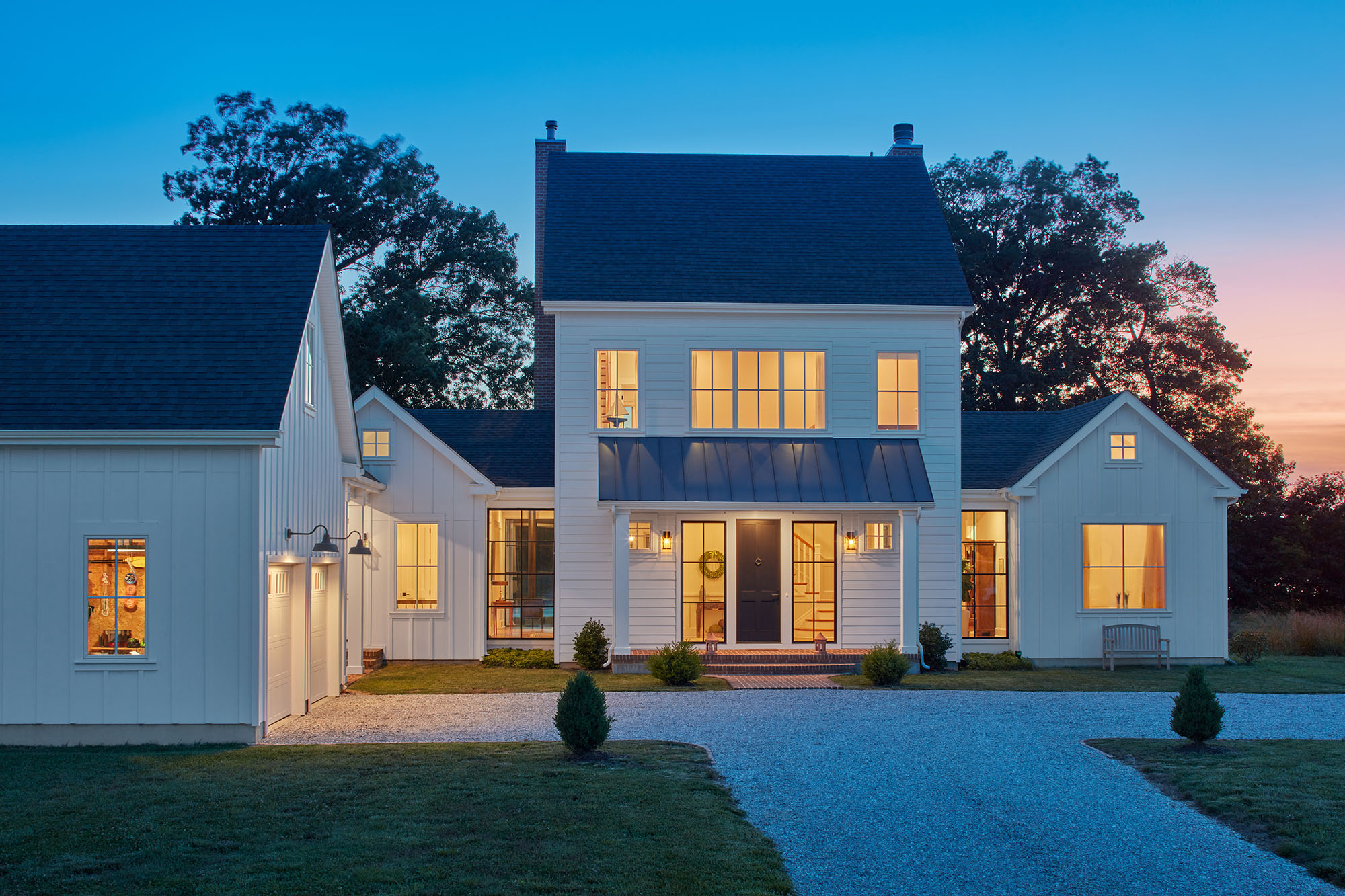- © 2025 Annapolis Home Magazine
- All Rights Reserved
By Dylan Roche | Photography by David Burroughs

Some traditions stand the test of time for good reason. It was with this thought in mind that Marta Hansen of Hansen Architects designed the residence of Sabine and Stephan Strothe, drawing inspiration from the five-part Tidewater Colonial houses so often seen in the 18th century.
Even though 300 years have passed since the height of its popularity, Hansen points out that this architectural style is still relevant for a modern home. The design maximizes the home’s perimeter to get the most daylight and ventilation and sets the scene for an interior with an open floor plan where primary living spaces are all easily accessible. “I call it a modern farmhouse,” Hansen says, though she admits the home has modern touches that an 18th-century Tidewater Colonial would not. “Old farmhouses would not have this many windows, and the windows wouldn’t be floor-to-ceiling—so it’s a modernization.”
It’s true that the floor-to-ceiling windows along the hyphens that connect the wings to the main house aren’t in keeping with historical architectural tradition, but they enliven the space, bringing in plenty of natural light and providing breathtaking views of Reed Creek, which runs alongside the 22-acre property.
In the case of an old farmhouse, Hansen explains, detached structures would contain the kitchen so the main house could keep cool as well as avoid any risk of fire. Over the years, these kitchens would be attached to the main part of the house. In Hansen’s modern interpretation of this style, the wings off the main house—connected by windowed hyphens—resemble milk barns. Unlike the main part of the house, which is two and a half stories, these wings are only one story, with vaulted ceilings and exposed cross-tie beams. To one side are guest bedrooms, and to the other side are the kitchen, mudroom, and a screened porch. A garage connects to the mudroom via a breezeway.
Inside, this layout gives the home great symmetry. The primary living space in the central pavilion offers openness. As the kitchen windows go all the way down to the level of the counters, this room gets plenty of natural light. All of it looks out onto a back terrace that sits right between two of the home’s wings.
Dubbing this home an “abstracted” farmhouse, Hansen points out elements that reference Tidewater Colonial rather than replicating it exactly. “It’s similar to the way modern art will abstract traditional forms—make it a color study or a line study rather than photorealism,” she says. For instance, the understated trim work—elaborate casing or molding along the walls and around doors—is unlike that which might be seen in traditional 18th-century homes. “It’s not fussy trim work—it’s all about simplifying it to make it lighter and brighter,” Hansen explains.
Featuring such elements as their book collection displayed in the built-in shelves that dominate the great room in the main pavilion, Sabine Strothe designed the décor herself in a way that the home’s interior would reflect their lives. Careful to choose contemporary pieces of furniture that paired seamlessly with antiques handed down from family, she ensured that the ensemble would not compete with the property’s natural surroundings. She wanted to make sure that the interior “did not outdo what we have around the house; that it’s neutral but not boring.”
Another way to bring nature inside? A series of limited-edition prints of bird paintings by 18th-century artist Olof Rudbeck the Younger, including a crane and a duck prominently displayed over the fireplace. “I always try to make sure that what’s in the house always relates to what’s outside the house,” Sabine says.
This farmhouse is where tradition and modernity work together, where nature feels close by, and where those things that people love about life on the waterfront or on a rural farm feel tangible and relatable. It’s a successful abstraction indeed: taking the hallmarks of the farmhouse and envisioning them in a new way.
ARCHITECTURE: Marta Hansen, Hansen Architects, hansenarchitects.net | CONSTRUCTION: Greg Parkerson | ENGINEERING: Lane Engineering, leinc.com | LANDSCAPE ARCHITECTURE: Heike Nolker, heikenolker.com | ANDERSEN WINDOWS: Shore Lumber and Millwork, shorelumber.com | Granite Countertops: Marmara USA, marmarausa.com | Kitchen: Kitchen Store of Easton
© Annapolis Home Magazine
Vol. 14, No. 4 2023